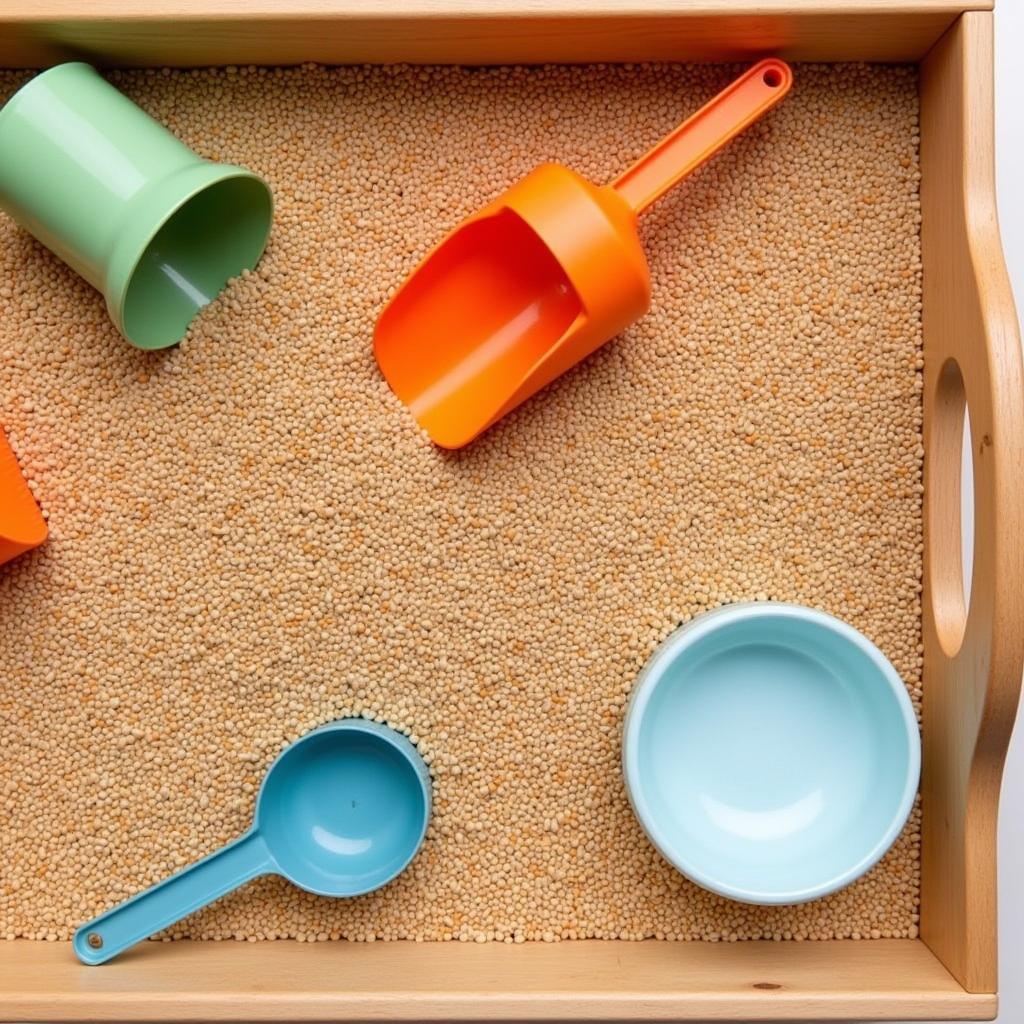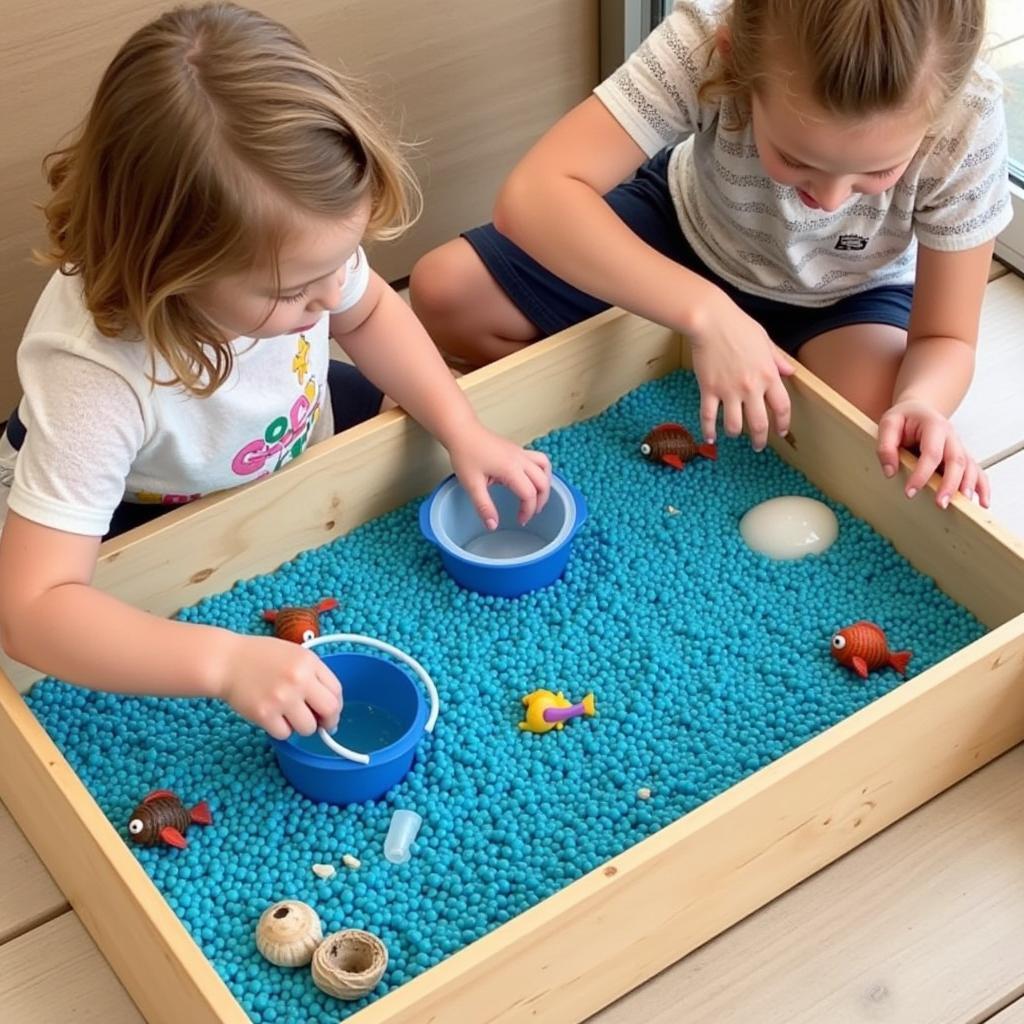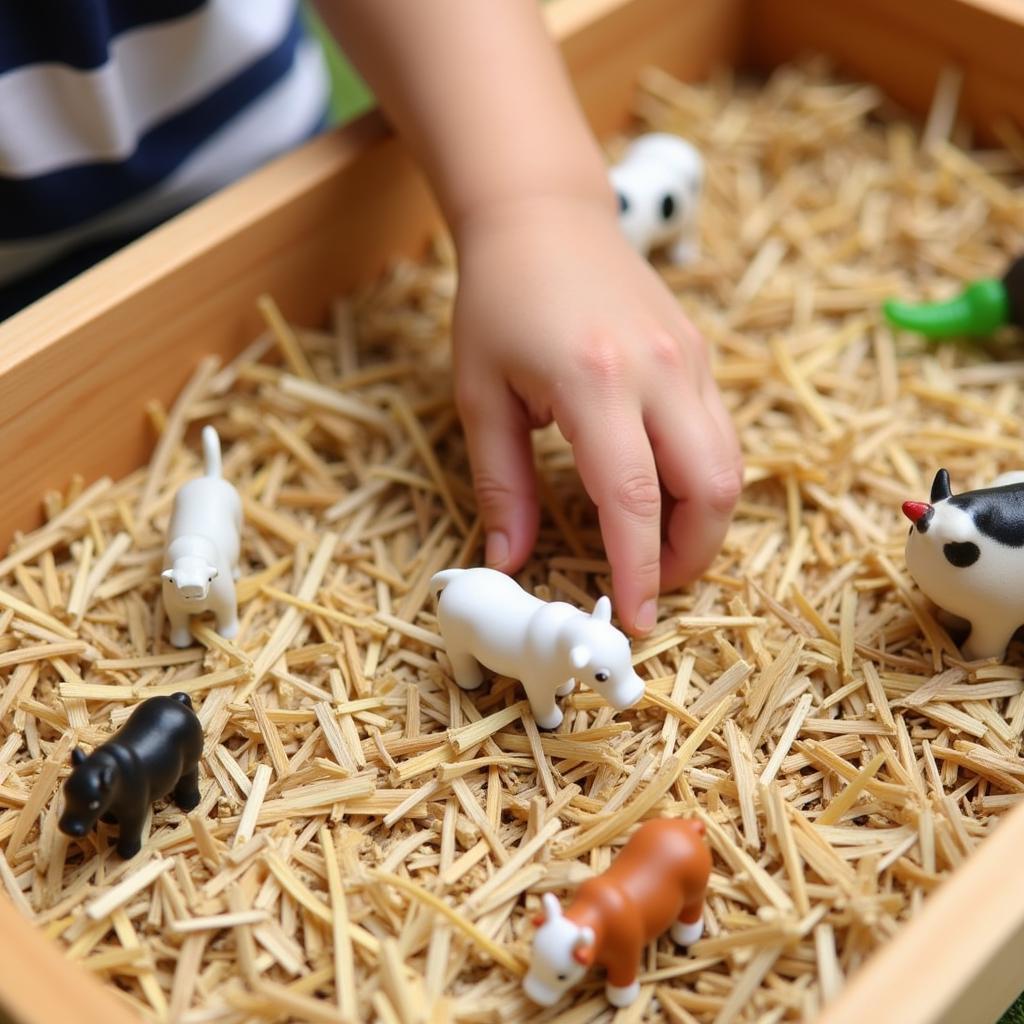Discovering the Wonders of a Wooden Sensory Bin
November 5, 2024Wooden Sensory Bins offer a world of enriching play for young children. They stimulate creativity, enhance fine motor skills, and provide countless opportunities for learning and exploration. From scooping and pouring to sorting and building, a wooden sensory bin provides a tactile and engaging experience that captivates kids and encourages development.
Unleashing Creativity with Wooden Sensory Bins
Wooden sensory bins are more than just toys; they’re tools that foster imagination and creative thinking. Unlike plastic bins, the natural texture and warmth of wood add a calming element to playtime. The simple act of filling a wooden bin with various materials encourages children to create their own mini-worlds. They might imagine a construction site, a farm, a bustling city, or a magical forest, transforming the bin into anything their minds can conjure. This imaginative play is crucial for cognitive development, helping children problem-solve, develop narrative skills, and express themselves creatively.
Children love to explore different textures, and a wooden sensory bin provides the perfect platform. Fill it with dried beans, rice, pasta, or even water beads for a unique tactile experience. Add scoops, cups, and other tools to encourage scooping, pouring, and transferring, which helps refine fine motor skills.
 Wooden sensory bin filled with beans and scoops
Wooden sensory bin filled with beans and scoops
The Benefits of Wooden Sensory Bins for Child Development
The educational benefits of wooden sensory bins are numerous. They can be used to teach colors, shapes, sizes, and counting. You can incorporate themed elements, like letters and numbers, to introduce early literacy and numeracy concepts. Sensory bins also offer a great opportunity to introduce scientific concepts like volume, weight, and density. By experimenting with different materials, children learn about cause and effect and develop critical thinking skills.
Moreover, sensory play can have a calming effect on children, helping them regulate their emotions and reduce stress and anxiety. The repetitive motions involved in scooping, pouring, and sorting can be incredibly soothing, providing a sense of focus and control.
 Children playing with an ocean-themed wooden sensory bin
Children playing with an ocean-themed wooden sensory bin
Choosing the Right Wooden Sensory Bin
When choosing a wooden sensory bin, look for one made from durable, non-toxic materials. Smooth, sanded edges are essential for safety. Consider the size of the bin, ensuring it’s appropriate for your child’s age and space. Some bins come with lids for easy storage, which is a bonus. You can even DIY a wooden sensory bin by repurposing a wooden crate or box.
“The beauty of a wooden sensory bin lies in its versatility,” says Dr. Emily Carter, a child development specialist. “It can be adapted to suit any child’s interests and developmental stage.”
Making Sensory Play More Engaging with a Wooden Sensory Bin
Don’t be afraid to get creative with the materials you use in your wooden sensory bin. Natural elements like leaves, twigs, pinecones, and acorns add a touch of nature to playtime. You can also incorporate themed elements like miniature farm animals, dinosaurs, or construction vehicles to create immersive play experiences. Change the materials regularly to keep things fresh and exciting for your child.
“Adding themed elements to a wooden sensory bin can significantly enhance a child’s engagement and learning experience,” adds Dr. Carter. “It encourages imaginative play and allows children to connect with their interests in a hands-on way.”
 Wooden Sensory Bin with Farm Animals and Hay
Wooden Sensory Bin with Farm Animals and Hay
Conclusion
A wooden sensory bin is a valuable investment in your child’s development. It provides a platform for endless learning, exploration, and creative expression. By incorporating a wooden sensory bin into your child’s playtime, you’re nurturing their cognitive, social, and emotional growth while providing them with hours of engaging and enriching fun. Introduce a wooden sensory bin to your child today and watch their imagination soar!
FAQ
- What age is appropriate for a wooden sensory bin? Sensory bins can be enjoyed by children of all ages, from toddlers to preschoolers.
- How do I clean a wooden sensory bin? Simply wipe it down with a damp cloth.
- What can I put in a wooden sensory bin? The possibilities are endless! Try dried beans, rice, pasta, water beads, natural elements, or themed toys.
- Where can I buy a wooden sensory bin? They are available online and at many toy stores.
- Can I make my own wooden sensory bin? Absolutely! Repurpose a wooden crate or box.
- Are wooden sensory bins safe for children? Yes, as long as they are made from non-toxic materials and have smooth edges.
- What are the benefits of using a wooden sensory bin over a plastic one? Wooden bins offer a natural and calming aesthetic, and are often more durable.
Common Questions about Wooden Sensory Bins
- How do I prevent my child from making a mess with the sensory bin? Place a mat or sheet underneath the bin to contain spills. Supervise playtime and encourage your child to keep the materials inside the bin.
- What if my child puts the sensory materials in their mouth? Choose materials that are safe for mouthing, such as large pasta shapes or dried beans. Always supervise young children during sensory play.
- My child seems bored with the sensory bin. What can I do? Introduce new materials, change the theme, or add new tools and props to keep the experience fresh and engaging.
Explore More Sensory Play Ideas
Check out our other articles on sensory play for more inspiration and ideas:
- Creating a Calming Sensory Space for your Child
- DIY Sensory Bottles for Babies and Toddlers
Need help with your wooden sensory bin journey? Contact us at Phone Number: 0963418788, Email: [email protected] Or visit us at: 2M4H+PMH, Phường Nghĩa Thành, Gia Nghĩa, Đắk Nông, Việt Nam. We have a 24/7 customer support team.